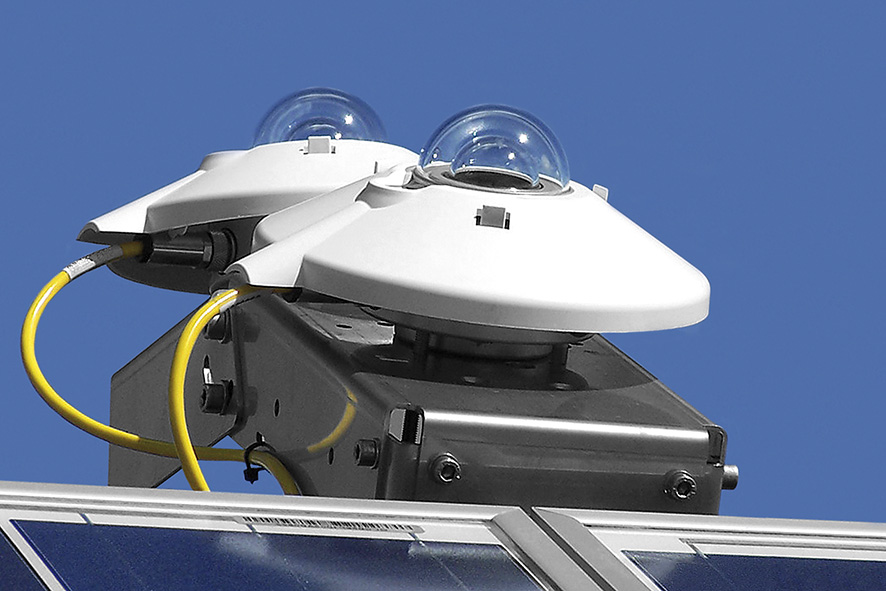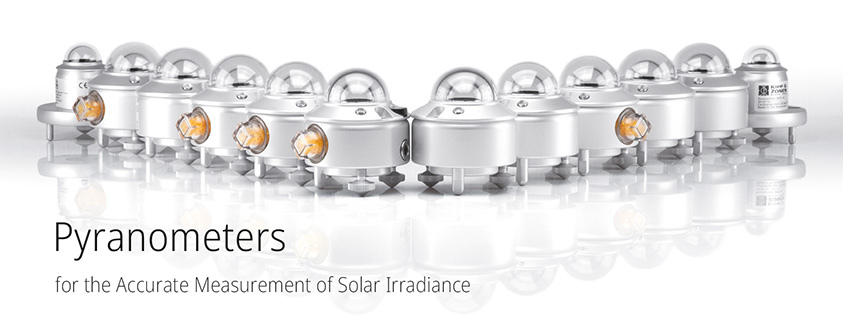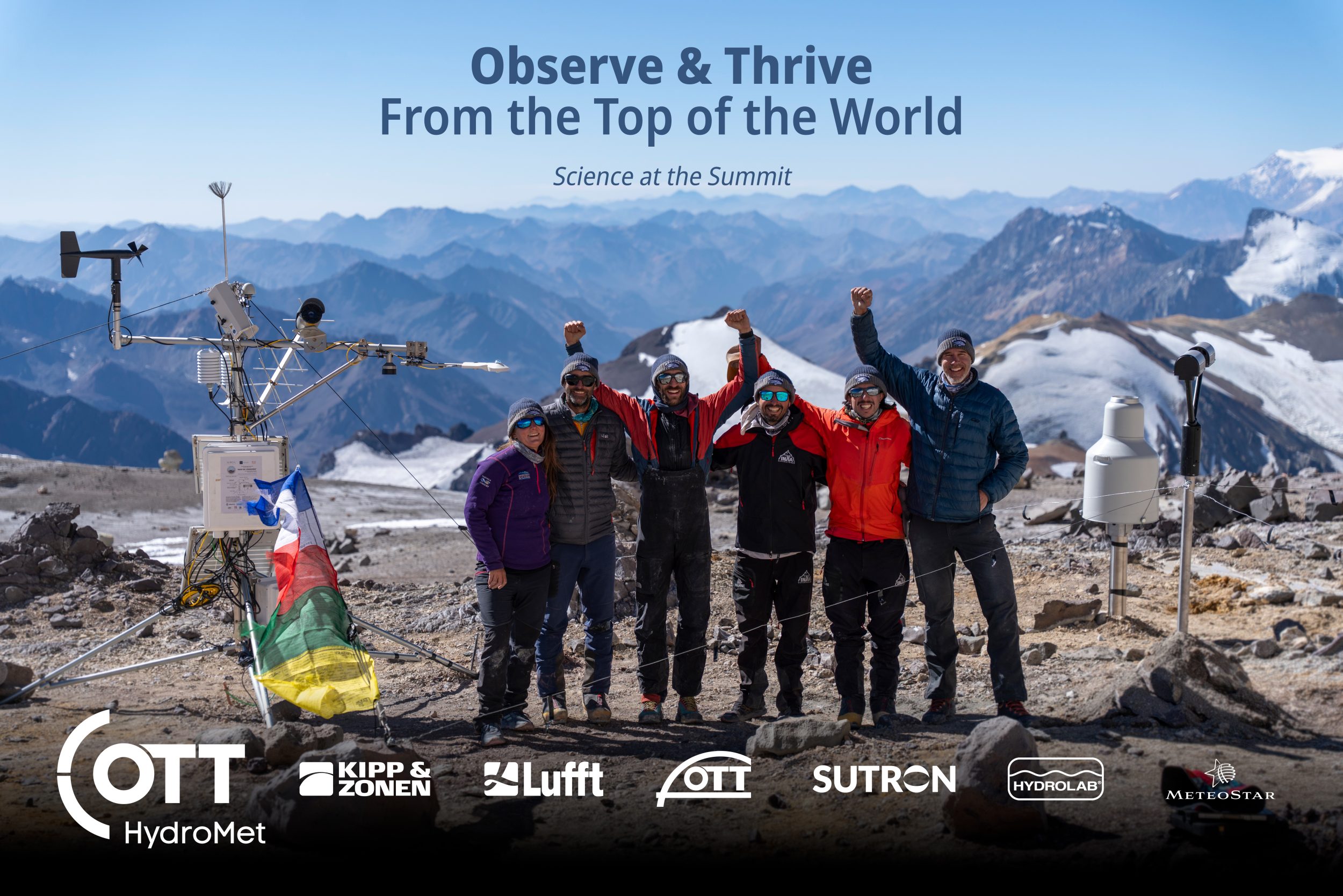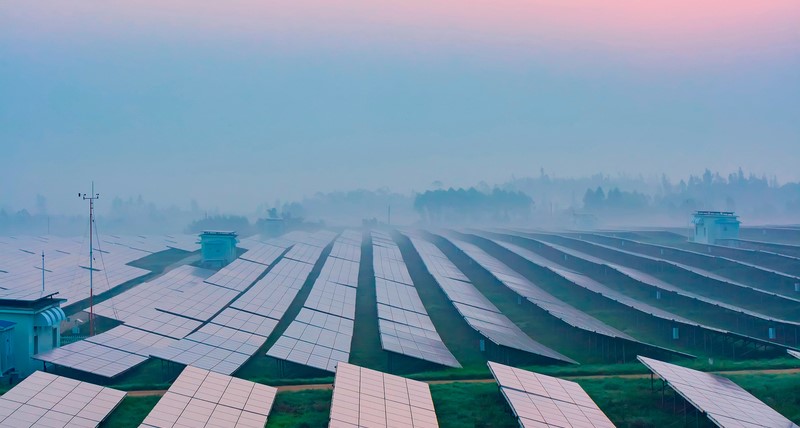To ensure top performance of solar PV installations, leading irradiance measurement instrumentation is required for both site assessment and resource monitoring. The quality of pyranometers and pyrheliometers is defined by the international standard ISO 9060. Within its highest Class A, OTT HydroMet manufactures three different smart pyranometers under their Kipp & Zonen brand.
Below we provide an overview on the international standard ISO 9060 and our Class A certified Kipp & Zonen pyranometers. But let’s start with the standard itself.
Introduction: What is ISO 9060
ISO, an acronym for the International Organization for Standardization, brings together global experts to develop and publish standards for varying industries. In 1990, ISO released ISO 9060 for the classification and specification if instruments measuring hemispherical and direct solar radiation. The 2018 update also included new classifications (Class A, B, and C) and changed the spectral response parameter from spectral selectivity to spectral error.
If you’d like to learn more about the changes to the original ISO 9060 with the release of the 2018 version, check the article Spectral Selectivity vs. Spectral Error: Shedding Light on ISO 9060:2018.
Kipp & Zonen Pyranometers
Following the international standard ISO 9060, only the most accurate instruments pyranometers are rated certified as Class A. Still, there are is a variety of pyranometers to choose from. OTT HydroMet’s comprehensive portfolio of premium environmental monitoring equipment includes three pyranometer models that fulfill the high requirements of Class A: the Kipp & Zonen SMP10, the SMP12, and the SMP22.
Similarities Across the SMP Series
Let’s start with the similarities: The Kipp & Zonen SMP range of smart pyranometers is based on the proven technology of the analogue CMP series, but has a micro-processor, memory, and firmware that makes them digital and faster. All SMP pyranometers are ‘Spectrally Flat’ according to ISO 9060, which means they provide a steady response across the solar spectrum. In technical terms, spectrally flat pyranometers have a spectral selectivity of less than 3% (guard bands 2%) in the wavelength range from 350 nm to 1500 nm (0.35 µm to 1.5 µm).
All SMP pyranometers communicate via Modbus RTU, which makes it a very convenient choice for easy SCADA integration.
Standard 5 Year Warranty
Engineers and technicians around the world appreciate the long lifetime of Kipp & Zonen pyranometers, which usually exceeds 10 years significantly. That’s why we trust in our products and grant a five year warranty – that is more than double the standard warranty of other goods – for all CMP and SMP pyranometers.
OTT HydroMet offers three different Class A smart pyranometers under the product brand Kipp & Zonen:
On PV plants around the world, whenever you spot a yellow cable, chances are high to find a Kipp & Zonen SMP10. With over 65,000 manufactured devices, the SMP10 is the most sold instrument from OTT HydroMet’s product brand Kipp & Zonen. It is used for reliable and accurate measurement of the incoming sunlight including specific components such as GHI, PoA, DHI, albedo, or others. The SMP10 is a spectrally flat Class A pyranometer and has an internal desiccant that will last for at least 10 years if the housing is not opened. This minimizes maintenance significantly. The SMP10 is available in two versions; both communicate via RS485 Modbus RTU and one analogue output, as version V (0 to 1 V) or A (4 to 20 mA).
SMP12: Kipp & Zonen’s Most Innovative Pyranometer Yet
The new SMP12 is a fast response spectrally flat Class A pyranometer combining solid-state dome heating, no moving parts, and best-in-class surge protection to maximize accuracy and minimize maintenance. Thanks to its smaller detector and tailored firmware, the SMP12 reacts quicker than any other SMP model. Additionally, it features integrated sensors to monitor the tilt angle in pitch and roll as well as and internal humidity, which enables maximum control on remote operation.
SMP22: The World’s Most Accurate Smart Pyranometer
Users who expect the highest possible accuracy choose the SMP22. Meteorologists and climate researchers rely on the SMP22 and its analogue brother, the CMP22. Both are used around the globe as part of the Baseline Surface Radiation Network (BSRN). The SMP22 shares all class-leading characteristics of the CMP22, in addition to the advantages of a smart pyranometer, including temperature compensation over a large range. A 10 K thermistor internal temperature sensor is standard, a Pt-100 sensor is optional. The SMP22 is available in two versions; both communicate via RS485 Modbus RTU and one analogue output, as version V (0 to 1 V) or A (4 to 20 mA). In recent years, there is a growing demand for the SMP22 on large utility-scale PV plants, too.
Overview
This table gives an overview which pyranometer is the appropriate one for your purpose.
| SMP10 | SMP12 | SMP22 | |
|---|---|---|---|
| Spectrally Flat Class A (ISO 9060:2018) | ✅ | ✅ | ✅ |
| Integrated heater | - | ✅ | - |
| Fast Response Time (ISO 9060:2018) | - | ✅ | - |
| Response time (63%) | < 0.7 s | < 0.15 s | < 0.7 s |
| Communication via RS485 Modbus RTU | ✅ | ✅ | ✅ |
| Analogue output available (A- and V- versions) | ✅ | - | ✅ |
| Tilt angle monitoring | - | ✅ | - |
| Internal humidity monitoring | - | ✅ | - |
| Zero offset A // thermal radiation (at 200 W/m²) | < 7 W/m² | < 1 W/m² | < 3 W/m² |
| Zero offset B // temperature change (5 K/h) | < 2 W/m² | < 1.5 W/m² | < 1 W/m² |
| Directional response (up to 80° with 1000W/m² beam) | < 10 W/m² | < 10 W/m² | < 5 W/m² |
| Temperature response (-40 °C to +70 °C) | < 2% | < 2% | < 0.3% |
Are you interested in learning more? You can find the technical specifications and more details of the three models above and other Kipp & Zonen pyranometers in the Pyranometer brochure. Download the brochure by clicking on the button below. Further questions? Our team of researchers and technical experts is happy to help.
Further reading & listening
- Blog: Spectral Selectivity vs. Spectral Error – Shedding Light on ISO 9060:2018
- Podcast: CMP or SMP pyranometers? Comparison of analog and smart sensors – Interview with Sajad Badalkhani, Technical Services & Support Manager at OTT HydroMet.
- Blog: Questions & Answers – Discovering the New SMP12 Class A Pyranometer
- Interview with Scientist Dr. Joop Mes: “ISO 9060:2018 reflects the reality much better.”
- SMP12 Data Sheet and Brochure





